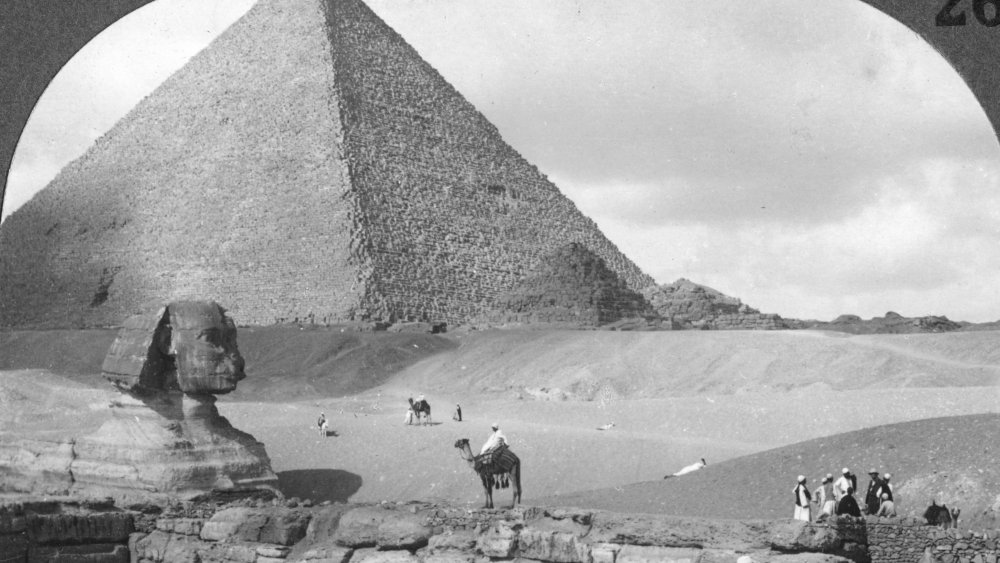This Is How The Ancient Egyptians Built The Pyramids Of Giza
If you were to believe some of the more unusual things aired by the History Channel, the only explanation for the architectural abilities of ancient, usually non-European civilizations is... aliens. Right. The historical record can safely say, however, that the Pyramids of Giza were not the work of extraterrestrial beings with an interest in funerary construction.
When Pharaoh Khufu ordered the pyramid's construction around 2580-2560 BCE, according to Discovery, they simply used the stones from a quarry just to the south. However, finding the materials was the easy part: after all, the pyramid was designed to reach 481 feet or 146.5 meters. How could they possibly raise huge blocks of stone so high?
In 2018, archaeologists discovered a ramp at the quarry in Hatnub, that could explain how pyramid builders raised stones to higher elevations. Yannis Gourdon explained to Live Science how such a system would work: "This system is composed of a central ramp flanked by two staircases with numerous post holes. Using a sled which carried a stone block and was attached with ropes to these wooden posts, ancient Egyptians were able to pull up the alabaster blocks out of the quarry on very steep slopes of 20 percent or more." The system makes further sense if you consider the pyramid's... well, pyramid shape. As the blocks have to use each level as the setting for a ramp to the next, the structure would naturally taper until it turns into a tip at the top.
Busting another myth
As incredible as this is, appreciating the process becomes a bit harder when you hear that the pyramids were built on the backs of slavery ... except that might not be true either. In 2010, the Guardian reported that archaeologists working around the Pyramids of Giza found more tombs, that they believe were for those who labored on the pyramids. These shallow shafts contained many bodies, as well as bread and beer for them to enjoy in the afterlife.
Even if the pyramid builders were not slaves, though, they certainly weren't "free," either. Dr. Zahi Hawass, secretary general of the Supreme Council of Antiquities, explained the nuanced difference to Harvard Magazine: "People were not atomized, separate, individuals with the political and economic freedom that we take for granted. Obligatory labor ranges from slavery all the way to, say, the Amish, where you have elders and a strong sense of community obligations, and a barn raising is a religious event and a feasting event." The difference, essentially, is that nobody owned the pyramid builders as personal property, which is what made a person a slave. However, the even without the economic transaction, life conditions, especially those that would have someone build a pyramid, still removes any freedom to do differently. It may be due to loyalty or it may be due to a coercive environment that deprives a person of agency, but their choices were still more predetermined anything most of us have.
So, not slavery, but exploitative work conditions. Got it.

